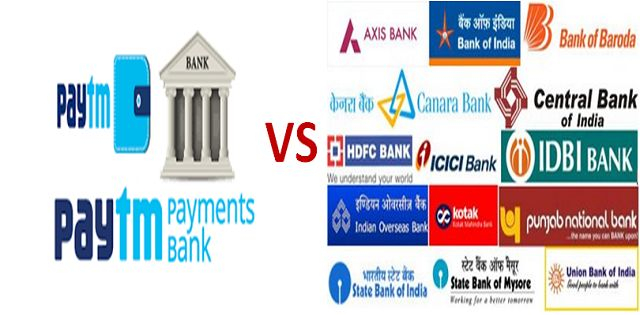
In this article, I am going to take a deep dive into the details of payment banks. So, for payment banks cannot give loans. No payment banks can get into the loan business and this sets them apart from the other types of banks and the maximum deposit that these payment banks can actually take is one lakh rupees. The deposit has to be in the form of a savings account. You will be able to open a savings bank account up to rupees 100000 only. Now recently there has been some talk of increasing this limit to 5 lakhs because earlier they had said that the deposit insurance and credit guarantee corporation (DICGC) limit was actually one lakh. so, they would ensure 1 lakh per bank. So, that is why the deposit was kept at 100000. Now they are saying that maybe they are going to increase it.
Services and requirements for a payment bank.
These payment banks can issue ATMs which is very important because if you don’t have ATM, then, how are you going to draw the money and they can also issue debit cards so that, bank of india bc you can do bill payments and cashless transactions and the minimum capital that you need for a payment Bank to be formed is 100 crore rupees. So, the minimum worth is 100 crores rupees to set up a payment bank and there are no fixed deposits or recurring deposits in our payment banks because the business is such that they cannot give much interest to the users and here it is not going to be feasible for them. There will also be no credit card. This is a no-brainer because if they cannot give loans, how are they going to give you that credit card because it is a type of revolving credit. So, no credit cards are allowed and you also have to maintain the cash reserve ratio in the payments Bank. So, this is the business of the payment bank which is going to be like this.
Things you need to do to run a payment bank.
So, to run a payment bank properly, we have to maintain the cash reserve ratio. They have to keep aside the 3% like all the other banks have to keep aside and 75% of all the funds, that the payment Bank gets, they have to keep as SLR bonds. So, they have to invest in government securities. SLR is the statutory liquidity ratio. These are very safe instruments and you can get a very low interest rate out of them. So, they are the most secure investment and 75% of the money has to be part of those SLR bonds and the rest amount of the money can be parked with the scheduled commercial banks (SCB). So, you can keep it as the FDs in the scheduled commercial bank. So, we can understand how difficult this business is because we have to maintain CRR. We have to maintain 75% as SLR bonds and then the rest. We have to park with the scheduled commercial banks and this is why the revenue model is not so strong for payment banks. They are tying up with different kinds of banks to offer some insurance products and other things but still, they are not getting that many good opportunities for investment, and the promoter stake have to be 40% for 5 years. If it is greater than 40% then you can bring it down to 40% by 5 years and the so that is the 40% and then 30% by the ten years so by 10 years you have to bring down your promoter stake to 30% and 26% by 12 years so this is a reduction and you have to bank bc form maintain it and the maximum voting rights for the investor is kept at 10% and just know that this 10% can be traced to 26% maximum with prior approval of the Reserve Bank of India and if you want to buy more than 5% shares in a payment Bank then you will be getting the prior approval of Reserve Bank of India so that is also important that NRI deposits are not allowed. So, non-resident Indians cannot invest in the payment banks. Payment banks can become small financial banks after 5 years but they have to fulfill all the eligibility criteria for it. So, that’s all about the payment banks.






